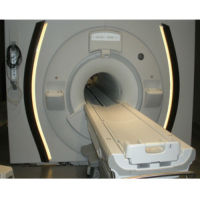Sitting through a “chalk and talk” lecture has long gone, but is “death by PowerPoint” any better? One research group at the University of Girona thought not, and has developed a problem-based learning computer game for medical students, radiology residents and others to learn about radiology. And even experienced radiologists can learn something, according to Prof. Salvador Pedraza, chairman of Radiology and Nuclear Medicine in the University of Girona in Spain, who presented the project at the Management in Radiology meeting in Barcelona last month. Speaking to HealthManagement.org Prof. Pedraza (pictured) explained that the concept was first developed for medical students, but all health professionals benefit from this learning approach.
 MEDGAME is an educational tool to improve learning of basic concepts related to the use of imaging tests and radiological techniques. It combines the learning of radiology concepts with the learning of pathological, medical and surgical knowledge, and was developed by a team at the University of Girona with the support of the Radiological Society of North America. MEDGAME uses a problem-based learning approach to teach imaging concepts. It presents students with interactive challenges and uses a storyboard and realistic dialogues in a 3D videogame to make learning imaging fun.
MEDGAME is an educational tool to improve learning of basic concepts related to the use of imaging tests and radiological techniques. It combines the learning of radiology concepts with the learning of pathological, medical and surgical knowledge, and was developed by a team at the University of Girona with the support of the Radiological Society of North America. MEDGAME uses a problem-based learning approach to teach imaging concepts. It presents students with interactive challenges and uses a storyboard and realistic dialogues in a 3D videogame to make learning imaging fun.
Two games have been developed so far. MEDGAME 1, as presented at RSNA 2013, includes images of five scenarios of typical radiology departments: a reporting room, a plain-film x-ray room, a sonography room, a computed tomography room, and a magnetic resonance imaging room. Three roles are included: a) The player requests a radiological examination and then must answer the questions asked by the senior radiologist; b) tge senior radiologist, who questions the player; c) the patient, whose avatar is different in each challenge. Four challenges are included in the game: cervical trauma, appendicitis, pulmonary embolism, and acute stroke. Each challenge contains several questions about the patient’s radiological diagnoses.
See Also: ePOSSOM Launches Educational Modules On Pancreatic Cancer
MEDGAME 2 integrates radiology learning with the longitudinal management of lumbar pain and breast tumours, and incorporates radiology, clinical, anatomical, surgical and pathological information. The lumbar pain challenge starts from the onset of the patient’s pain, including the treatment of their pain, and takes 18 minutes to complete. The breast tumour path of the game goes through lab, radiology, the multidiscipinary team meeting and through to the surgery, including video of surgery, and takes 20 minutes to complete.
To play the game you choose the avatar and follow the pathway to treat the patient. The learner follows the patient and interacts with different specialists on how to manage the disease. You see the patient’s clinical history. The patient answers your questions, and as the doctor you answer their questions. If you make a mistake, you receive feedback. The game gives red flags at the end on what you need to learn and a peformance score. You can go back and try to get a better score. The game has been evaluated by residents, staff, professors and the department chair, including very experienced staff. This way of learning is much more satisfying for the student, according to Prof. Pedraza.
MEDGAME 1 can be downloaded from the project website
A preview of MEDGAME 1 is available from the partner company, Kaneda Games.
Two games have been developed so far. MEDGAME 1, as presented at RSNA 2013, includes images of five scenarios of typical radiology departments: a reporting room, a plain-film x-ray room, a sonography room, a computed tomography room, and a magnetic resonance imaging room. Three roles are included: a) The player requests a radiological examination and then must answer the questions asked by the senior radiologist; b) tge senior radiologist, who questions the player; c) the patient, whose avatar is different in each challenge. Four challenges are included in the game: cervical trauma, appendicitis, pulmonary embolism, and acute stroke. Each challenge contains several questions about the patient’s radiological diagnoses.
See Also: ePOSSOM Launches Educational Modules On Pancreatic Cancer
MEDGAME II Features
MEDGAME 2 integrates radiology learning with the longitudinal management of lumbar pain and breast tumours, and incorporates radiology, clinical, anatomical, surgical and pathological information. The lumbar pain challenge starts from the onset of the patient’s pain, including the treatment of their pain, and takes 18 minutes to complete. The breast tumour path of the game goes through lab, radiology, the multidiscipinary team meeting and through to the surgery, including video of surgery, and takes 20 minutes to complete.
To play the game you choose the avatar and follow the pathway to treat the patient. The learner follows the patient and interacts with different specialists on how to manage the disease. You see the patient’s clinical history. The patient answers your questions, and as the doctor you answer their questions. If you make a mistake, you receive feedback. The game gives red flags at the end on what you need to learn and a peformance score. You can go back and try to get a better score. The game has been evaluated by residents, staff, professors and the department chair, including very experienced staff. This way of learning is much more satisfying for the student, according to Prof. Pedraza.
Next Steps
The Girona team is now preparing MEDGAME 3 in cooperation with other Spanish universities. This will focus on emergency room activities, and include the role of the radiologist, the emergency room physician, the surgeon and the traumatologist.MEDGAME 1 can be downloaded from the project website
A preview of MEDGAME 1 is available from the partner company, Kaneda Games.
Latest Articles
Computer games, Radiology, Problem-based learning
MEDGAME has been developed as a computer game to teach radiology concepts to medical students and others



























